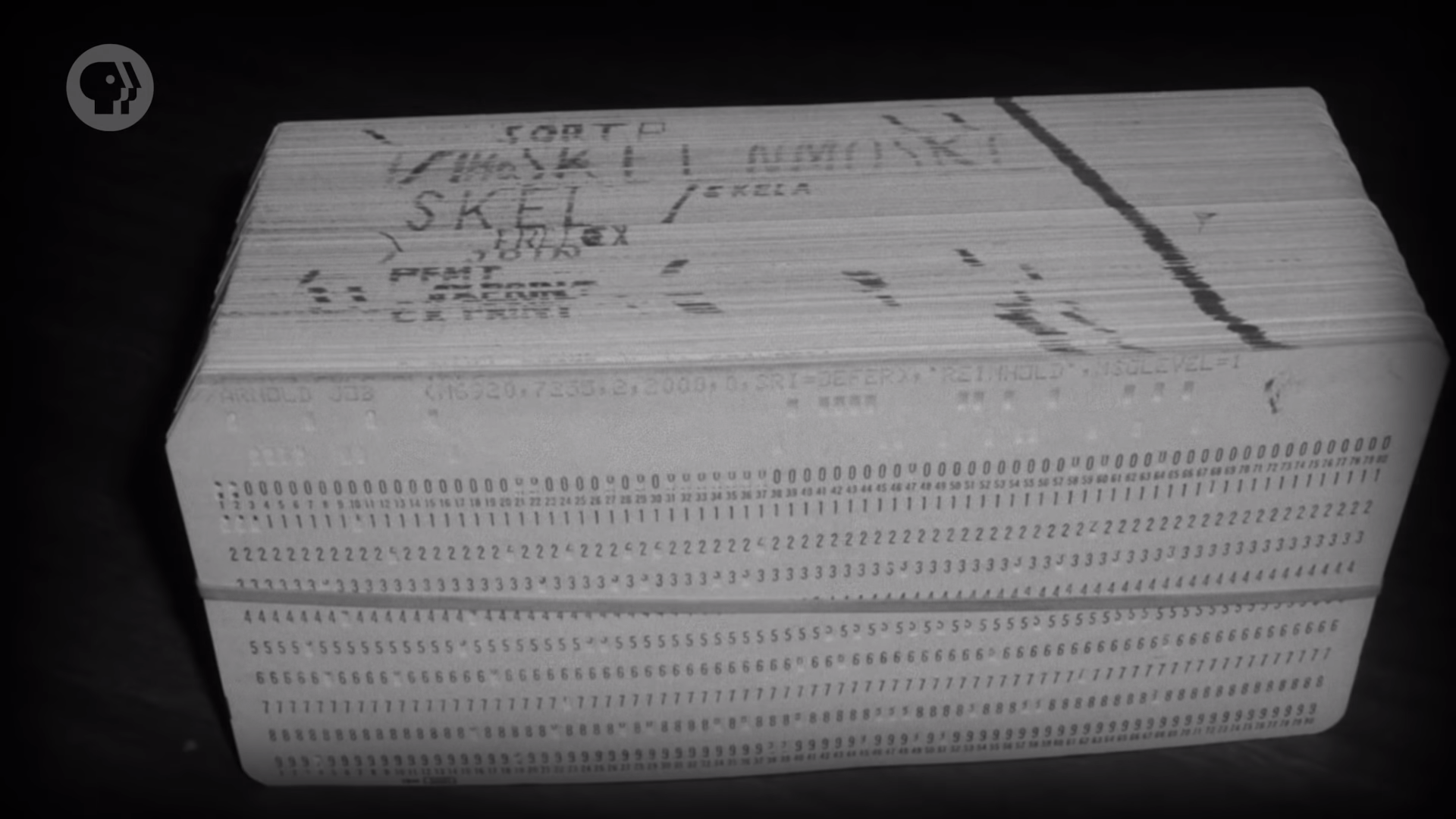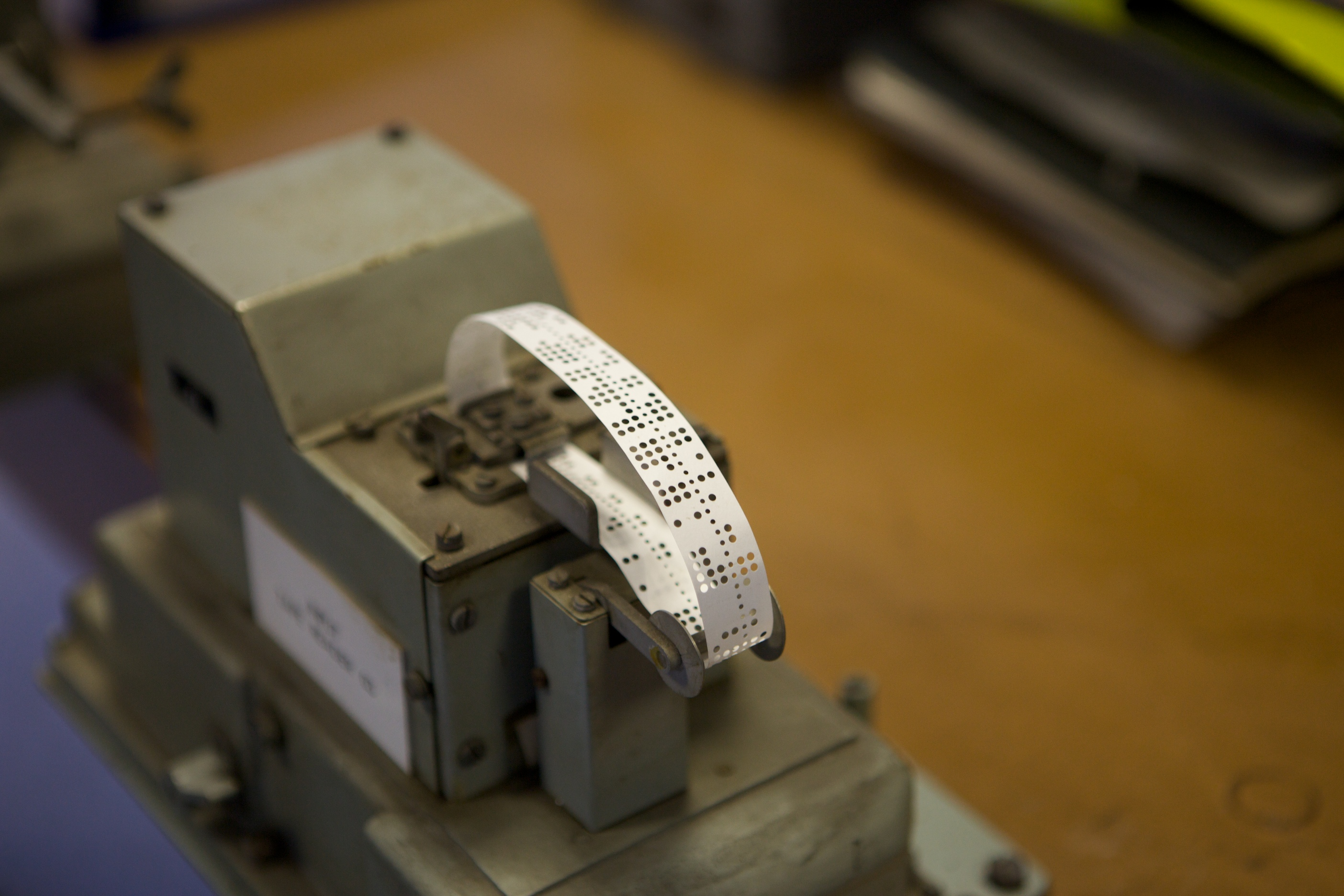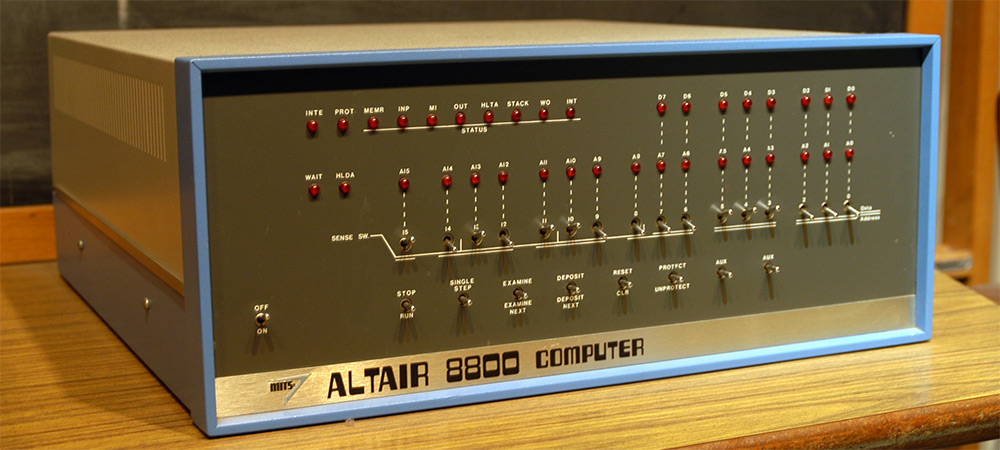Programmable Textile Loom (1800)
- The need to program machines existed before the deveopment of computers.
- Making patterned fabrics were very labor-intensive, thus expensive.
- Joseph Jacquard developed a programmable textile loom using punched cards.
- It is considered an earlist forms of programming.
Tabulating Machine, Punch Cards (1800, 1900)
- Punched cards turned out to be a cheap, reliable and fairly-human-readable way to store data.
US census 1890
- Punch cards were used to help tabluate the 1890 census, each card holding an individual person's data.
- Early tabulating machines were not truly computer, as they could only tabulate. Their operation was fixed and not programmable.
- At this time punch cards stored data, not a program.
Control Panel, Plugboards (1900~)
- Over the next 60 years, business machines grew in capability, adding features to subtract, multiply, divide, and even make simple decisions about when to perform certain oprations.
- To trigger these functions appropriately, programmer accessed control panel.
- Control Panel had full of little sockets, in which a programmer plug cables to pass values and signals between different parts of the machine. For this reason, they were also called plugboards.
- A programmer had to rewire the machine each time a different program needed to be run.
- By 1920s, plug boards were made swappable - more comfotable, and allowed different programs to be plugged in to a machine.
- However, plugboards were complicated to program - physically wiring up the ENIAC(1946) and getting the program to run could take upwards of three weeks.
Electronic Memory (Late 1940s, 1950s)
- Electronic memory was becoming feasible. Cost fell, memory size grew.
- Stored Program Computers - It became possible to store a program into a computer's memory - could be easily changed by programmers and quckly accessed by the CPU.
- With enough computer memory, it could store not only the program but also any data that program would need.
Von Neumann Architecture
- Unifyed the programming data into a single shared memory.
- Named after Von Neumann(폰 노이만), a mathmatician and physicist, worked on the Manhattan project and several early electronic computers.
- Von Neumann Computer - the one build from the last episode. Modern computer have this architecture.
Punch Cards, still (1980)
- Punch cards were stil used to load the programming data in to the computer before it can run.
- Almost all computer had a punch card reader.
- A program was stacks of punch cards. The order had to be kept.
- striping : Drawing a diagonal line to keep order.

US Air Force's SAGE air defense system
- The largest program ever punched into punch cards
- Completed in 1955, stored its program on 62,500 punch cards (5 megabytes of data).
- Punch paper tape (continuous version of cards)

Panel Programming
- Another common way to program and control computers in pre-1980s.
- Switches, buttons, and idicator lights to display the status of various functions and values in memory.
Altair 8800 (1975)

- Early home computers made for the hobbyist market used switches extensively, b/c home computers couldn't afford expensive punch card readers.
- Toggled the switches on the front panel to enter binary operation codes for the instructions to program.
Programming with early computers was the realm of experts.
- Intimate knowledge of underlying hardware made the job hard and tedius.
- Struggled to take full advantage of what computer can offer.
- Simpler way needed : rise of programming languages.
Vocabulary
- plaid - 격자무늬 천 (check design)
- loom - 베틀
- payroll - peopl on the payroll of an organization are the people who work for it and are paid by it.
- fiendish - 기괴한, 복잡한, 어려운
- upwards of - more than
- downtime - 기계, 컴퓨터가 작동하지 않는 시간.
- feasible - 실현 가능한.
- hallmarks - most typical quality or feature.
- well into - quite advanced or far along in something.
- whopping - 엄청 많은 (수량의)
- extensive - very great, 광범위하게
- peripheral - 지엽적인, 주변의, (컴퓨터의) 주변 장치
- socket - 다른 부분이 들어갈 수 있도록 푹 파인 것. (콘센트 등)
Thoughts
- 펀치카드가 1980년대에도 사용되었다는건 불과 30년전에는 지금의 환경이 없었다는 사실이 놀랍다.
- 기술의 발전 속도가 엄청 빠르다는 소리고, 뿐만 아니라 속도가 더 빨라지는 것 같다.
- 점점 더 흥미로워진다...!
3개의 댓글
Amazing! Exactly what a watch opener this particular publish may be personally. Greatly valued, saved, We can’t await much more! IPTV UK
답글 달기
I was reading some of your content on this website and I conceive this internet site is really informative ! Keep on putting up. maltcasino
답글 달기


I read that Post and got it fine and informative. thc tincture prices